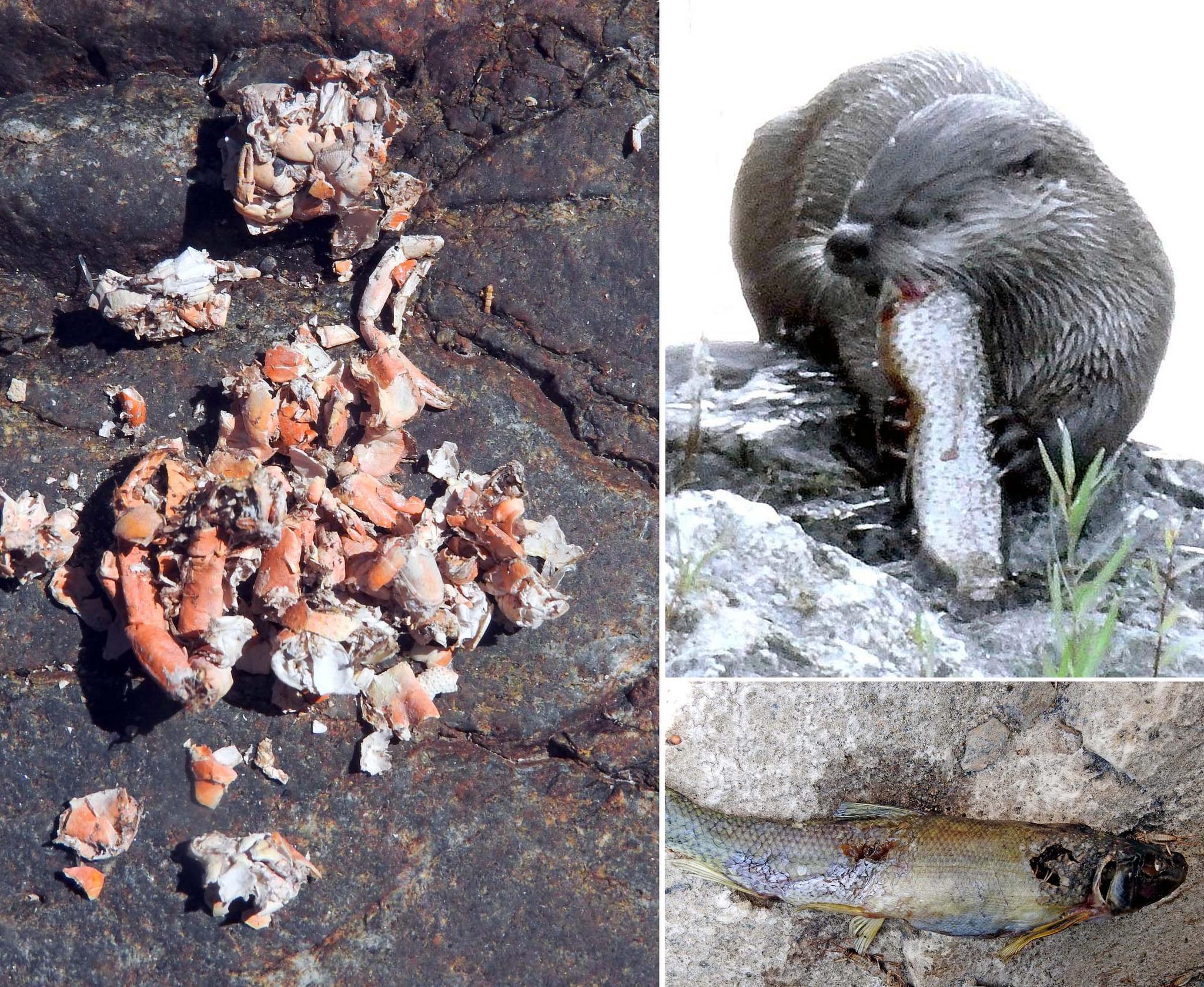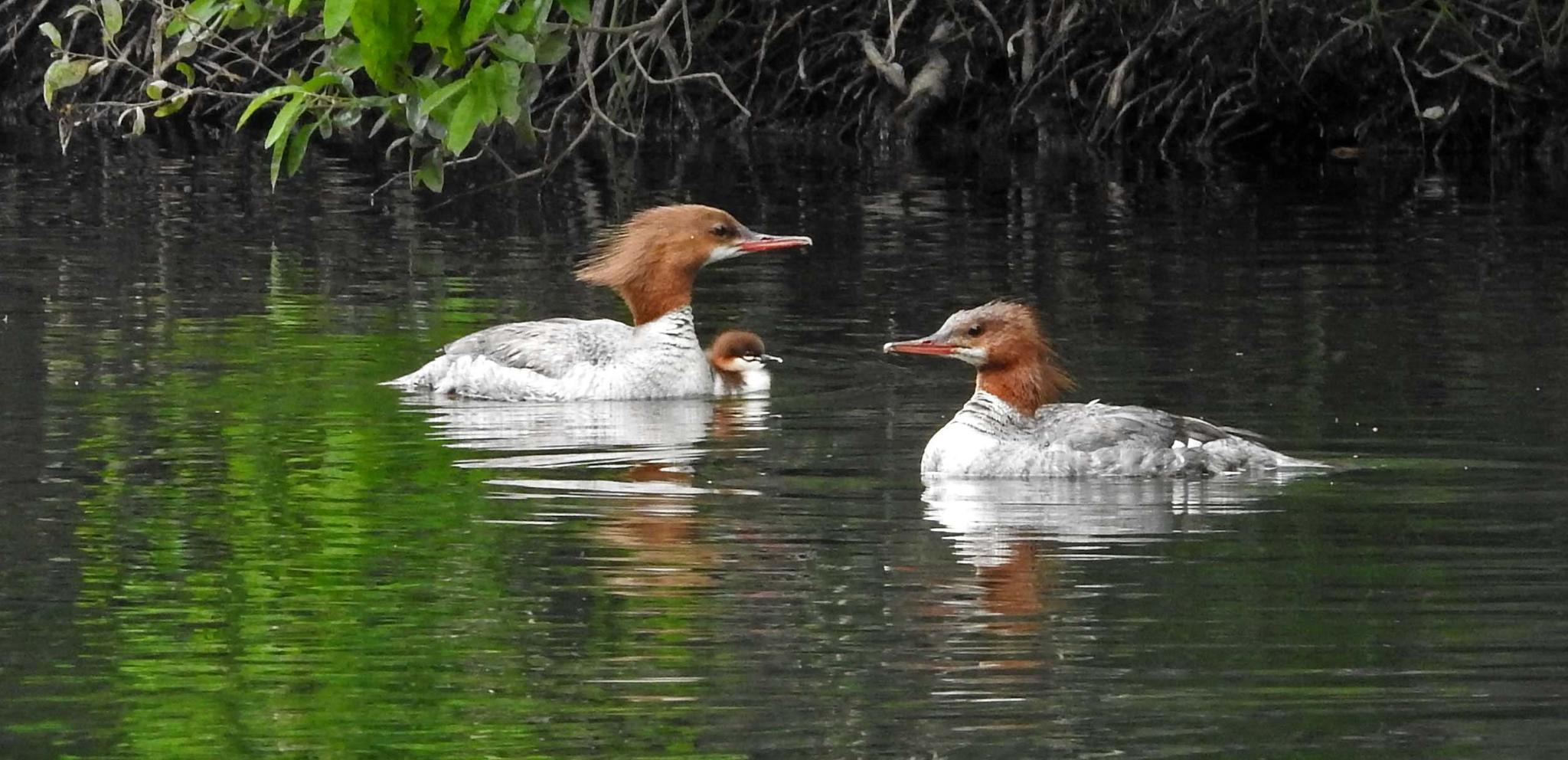
River Otter scat containing Signal Crayfish parts
River Otter eating a trout — Sacramento Sucker Fish (?)
Pacifastucus leniusculus — Lontra canadensis — Catostomus occidentalis (?)
I didn’t see a River Otter when I was on the river these past few weeks, but there were plenty of signs that they had been there. On the river rocks I found left overs from several Signal Crayfish meals, as well as a dead Sacramento Sucker Fish. These were probably left by a River Otter. The Sacramento Sucker Fish had a few bite marks and was several days old. I haven’t seen any Sucker Fish in the river for years! I was surprised to find this discarded one! Sucker Fish are bottom feeders and eat algae, small invertebrates, and plant matter.

Columbian Black-tailed Deer (Doe with fawns) — Black Bear
Odocoileus hemionus columbianus — Ursus americanus
Although I haven’t seen any bear or deer in the river this year, it may still happen! It’s always a surprise sighting!

Osprey — Pandion haliaetus
Just this week as I was driving across our bridge, an Osprey flew overhead with a fish in its talons!!! I didn’t get a photo but it was great to see! I hadn’t seen an Osprey on the river yet this summer! The photo above I took several years ago in our neighborhood!
There are many classifications (or subgroups) of raptors, such as accipiters, buteos, falcons, eagles, harriers, kites, ospreys, and owls. Ospreys are the only bird in their classification! They are unique among raptors in their hunting method of diving feet-first into water to capture fish. They are usually successful in 1 out of every 4 dives. No other raptors use this method of hunting. They also have small barbs on the pads of their feet to help grab slippery fish. After they have caught a fish and are back in the air, they maneuver the fish to face forward, using the fish’s streamlining to reduce aerodynamic drag. They then carry the captured fish to an elevated and prominent perch to be eaten. 99% of their diet is fish. They are large birds with a wingspan of 63”, a length of 23”, and a weight of 3.5lbs!!!

Common Mergansers — Mergus merganser
There are several different families of Common Mergansers on the river right now. I’ve seen a pair of adults with two ducklings, one female with 8 ducklings, one female with 6 ducklings, and one female with 4 ducklings!!! Typically only the females care for the ducklings. The offspring of two or more females being raised together in one group, is called brood amalgamation. In the group above there were two ducklings, but only one is visible in this photo.
Your questions and comments are appreciated. Please feel free to email me at northyubanaturalist@gmail.com. Thanks!
Featured Articles

Sheriff’s Office Accepts $60,000 Grant for New Search and Rescue Team →
December 2, 2025
Sierra County to enhance emergency response with grant-funded search and rescue team initiative.
Confusion Surrounds Release of the Plumas County Grand Jury’s Report →
December 4, 2025
WCB Considers Grant for Sierra Valley Tribal Land Purchase →
Updated November 22, 2025
Downieville Fire Auxiliary Hosts Annual “Holiday on Main” Event Saturday →
December 2, 2025
Flood Forces Temporary Closure of Sierra Hardware →
December 3, 2025